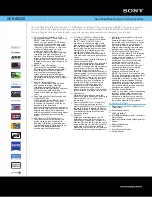
8
| ENGLISH
Solar Binoculars
A total solar eclipse occurs when the Moon is close enough to Earth in its orbit so
that it blocks the entire disk of the Sun from view. The partial phases of a total solar
eclipse leading up to totality are incredible to watch. The Moon will first appear as
a small dark dent in the edge of the Sun, growing to a large bite. If you are in the
path of totality, the Sun will eventually become a thin crescent and will disappear
completely. For a couple of minutes, daytime turns to deep twilight. Bright stars and
planets are visible in the daytime sky. After totality, the process reverses itself as the
Sun reemerges from behind the Moon. It is a sight that should not be missed.
How much of a given total solar eclipse you can see will depend greatly on where
you are located. The closer you are to the centerline of the path of the Moon’s
shadow, the greater the percentage of the Sun will be blocked and the longer the
solar eclipse will last. In order to experience totality, you need to be directly under
the Moon’s shadow. This path of totality is extremely narrow and for the 2017 total
solar eclipse the path is only 75 miles (120km) wide. If you are too far north or south
of the path of totality, you will only see a partial solar eclipse. Even if you are unable
to travel to the path of totality, everyone in the continental United States and most
of Canada will be treated to a partial solar eclipse with at least 60% of the Sun
covered by the Moon.


































